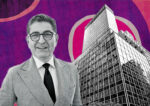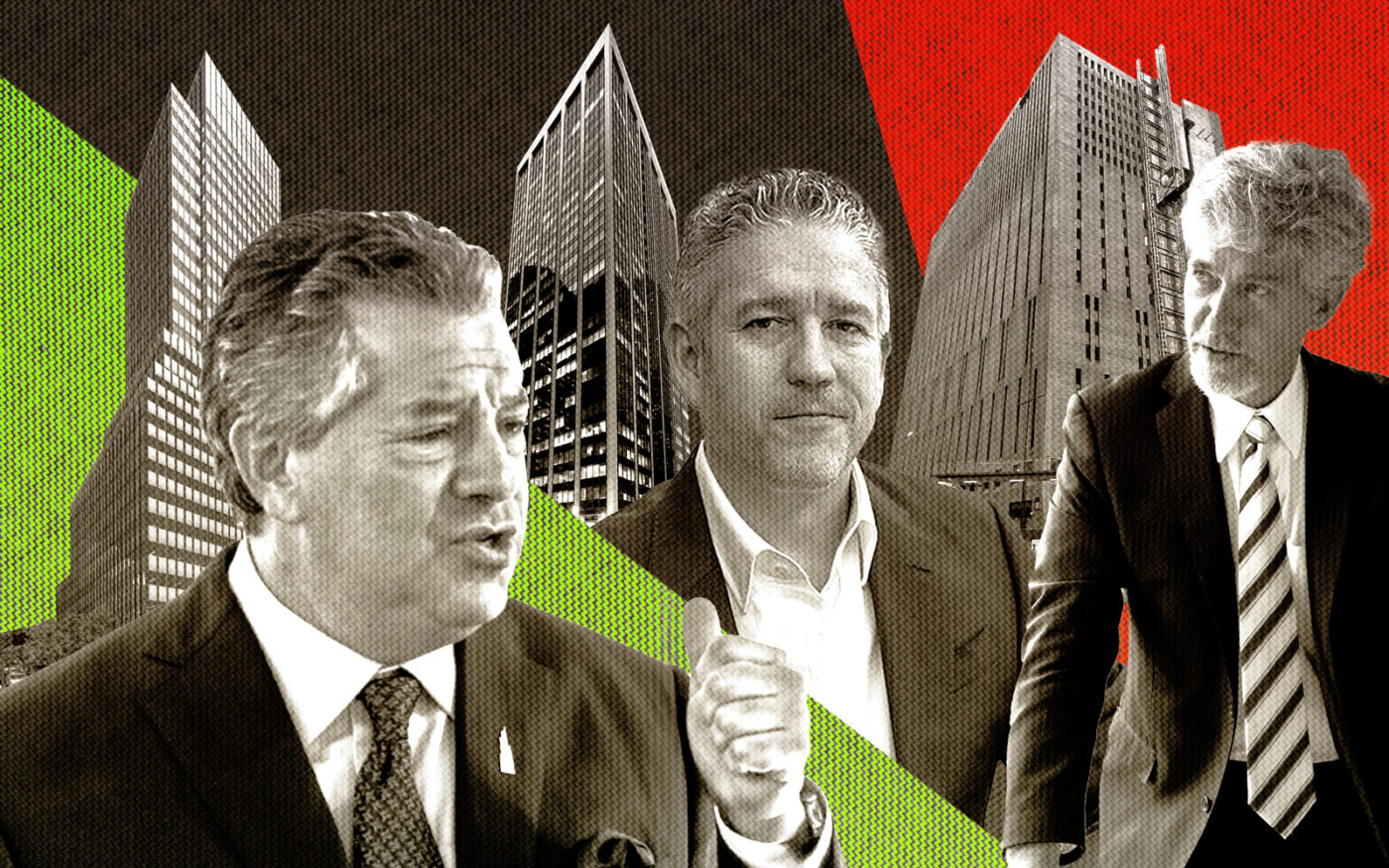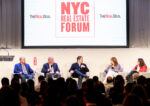 Nathan Berman plots largest office-to-resi conversion with former Pfizer HQ
Nathan Berman plots largest office-to-resi conversion with former Pfizer HQ
Friend or foe? Here’s what the new tax break means for office-to-resi conversions
Developers may choose to skip financial incentive to build affordable housing

You can lead developers to an aging office building, but you can’t make them convert it.
With office attendance still sagging in New York — a third fewer workers are commuting to Midtown than in 2019, and nearly 50 percent fewer to Downtown, according to an April report from REBNY — New York lawmakers are offering office building owners a new carrot to create affordable housing stock.
South of 96th Street in Manhattan, developers who set aside 25 percent of a conversion’s units as affordable at 80 percent of the area median income can now qualify for a 90-percent tax abatement.
For the small contingent of developers who specialize in gutting large office buildings to create what one architect called “slums for the rich,” the new incentive may feel lopsided: While the tax break lasts up to 35 years, the affordable units must stay that way forever.
“The mismatch is weird,” said one developer with experience converting offices to housing. “When the abatement ends, the affordability should end.”
The developer described the new incentive as offering “a giant negative carry” because it permanently limits rent increases for a quarter of units to what is approved by the Rent Guidelines Board. Revenue losses due to the rent cap would overtake the tax benefit in 50 to 60 years, the developer figured. “It costs you money forever,” he said.
Office-to-residential developers are free to forgo the tax benefit and pursue wholly market-rate pricing; in contrast, most ground-up multifamily developments won’t pencil out without the 485x break.
“Obviously,” the developer added, “it’s more attractive to lenders when the value of the asset increases, not decreases.”
Haste, not waste
For current owners of aging office buildings, the incentives may be more favorable than for investors looking to buy and convert. The alternative, after all, is more of the same: eroding property values, diminished demand, and new product that will outcompete theirs.
Marc Holliday, CEO of SL Green, has said that he expects 20 to 40 million rentable square feet of office to become residential under the program.
But the timeline is tight. Conversion must begin construction by June 2026 for the full tax abatement. After that, it falls to 30 years, and to 25 years after June 2028. Conversions that start after June 2031 will not be eligible for the tax benefit.
“This isn’t wait-and-see,” Holliday said. “You’ve gotta get going right now.” He said that SL Green intends to be first out of the gate, aiming to convert 750 Third Avenue, a 65-story tower spanning more than 750,000 square feet, into about 540 apartments.
Still, for many projects, making use of the state’s new tax incentive won’t be easy.
“Market-rate units offset not only the cost of doing the conversion, but also the cost of these affordable units,” said real estate attorney David Rosenberg of Rosenberg & Estis. “If you have a 20-unit building, it’s not clear that once you have put in the costs, and you have five affordable units you need to carry, that the 35-year benefit will be enough.”
A further caveat is that outside of the “Manhattan Core,” the tax abatement falls to 65 percent for developers who preserve a quarter of housing units as permanently affordable.
Stijn Van Nieuwerburgh, a real estate professor at Columbia’s business school, said the incentive program is a “knife’s edge case” that only pencils out for developers under near-perfect circumstances.
The tax benefit is quite generous for developers, according to Van Nieuwerburgh, but requiring permanent affordability is “very costly.” The math may simply not work, or not yet, at least.
New math
Buying office properties at a low enough price is typically what makes or breaks a conversion. Van Nieuwerburgh estimates that discount rate to be around 64 percent of pre-pandemic pricing on a typical Class B office building.
But the price-per-square-foot calculations that prevail in real estate rarely apply exactly to office conversions, according to Brian McFarland, a principal at CetraRuddy Architecture.
“When the abatement ends, the affordability should end.”
The firm designed the conversion for Metro Loft’s 55 Broad Street and 25 Water Street, the nation’s largest office-to-residential transformation to date. It will likely remain the largest until Nathan Berman proceeds with his plan to convert Pfizer’s former headquarters in Midtown.
“If you want entry-level renters, it’s more about absolute dollars than it is about dollars per square foot,” said McFarland. “If you can get two-thirds of what you might get for a one-bedroom apartment [in a ground-up residential building], you’re way ahead of the game.”
“Building owners who are just coming to [the idea of a conversion] need a lot of education,” he added. “One of the biggest challenges is convincing institutional or family portfolio holders to take on a level of risk and convince them we understand what plays in the conversion market.”
New York’s next possible conversion plays include Brooklyn developer Bushburg’s recent purchase of the Rudin family’s 1.2 million-square-foot office building at 80 Pine Street and David Werner’s deal to buy the 65-story 100 Wall Street.
With so little wiggle room to get the necessary returns on even the market-rate conversions, Van Nieuwerburgh said he expects many developers will eschew the affordable-housing incentives unless they can get their costs just right.
“It’s a bad idea if you were barely breaking even before,” he said. “Doing the affordability part out of the goodness of your heart is not going to work out.”
Mixed-income conversions, if they happen, will be new to the city.
“The handful of conversions that have moved forward to date were 100 percent market-rate due to the difficulty in making these conversions pencil out,” said Robert Fuller, a principal at Gensler, the world’s largest architectural firm. “We hope the new incentives change that.”
Government work
While the state is offering tax savings to spur office-to-residential conversions, the city last year introduced a program called M-CORE that rewarded landlords for upgrading their office building to compete with newer office product.
Only 11 owners applied for the first round of M-CORE. A second round of applications closed in mid-April.
Converting offices to residential is a higher priority, because it addresses both the housing shortage and office glut.
Mayor Eric Adams’ latest housing proposal, the City of Yes for Housing Opportunity, would make office buildings built before 1990 eligible to be turned into apartments. Under a new state law, the city may also allow residential buildings to have a floor-area ratio larger than the current limit of 12, making larger offices candidates for conversion.
“Any place from Madison Square up to Central Park, where there’s a lot of office building stock, those buildings are all built beyond 12 FAR,” said McFarland. “The ability to convert more than 12 FAR in those buildings is going to make a big difference for the conversion market.”
The Adams administration has 53 projects in its Office Conversion Accelerator and forecasts the construction of 20,000 residential units over a decade — if its initiatives are passed as proposed. But the proposals’ passing is no guarantee, as the seven-month review process that culminates in a City Council vote now begins.
“There’s a lot of unease at the City Council about some of the proposals,” said Rosenberg, “and also just about the breadth of the proposals themselves.”
Whether or not lawmakers embrace a full-throated attempt to convert more offices into housing, the biggest determining factor will remain the price of office buildings.
“If you think of Park Avenue from Grand Central up to 59th Street, or Sixth Avenue by Rockefeller Center, those buildings are just massive,” said McFarland. “I can’t imagine ever converting those, but God only knows what happens.”
Rich Bockmann contributed reporting.
Read more
 Nathan Berman plots largest office-to-resi conversion with former Pfizer HQ
Nathan Berman plots largest office-to-resi conversion with former Pfizer HQ
 “You’ve gotta get going right now”: Marc Holliday on Hochul’s office-to-resi bill
“You’ve gotta get going right now”: Marc Holliday on Hochul’s office-to-resi bill
 The Daily Dirt: Adams kickstarts housing plan
The Daily Dirt: Adams kickstarts housing plan




